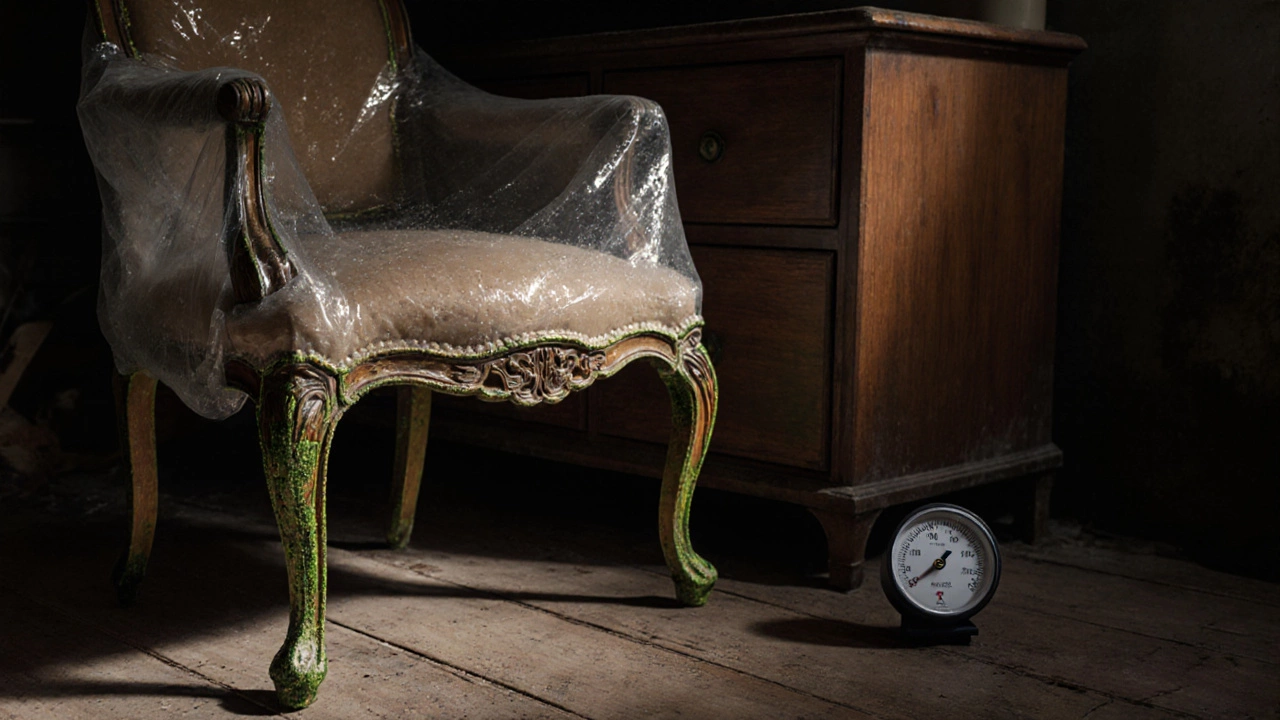When you store furniture, especially wood pieces like tables, chairs, or cabinets, you’re not just putting them away—you’re trusting them to survive damp air, temperature swings, and hidden moisture. mold-free furniture storage, the practice of keeping wooden and upholstered furniture dry and protected during storage to prevent mold, warping, and decay. Also known as dry storage for furniture, it’s not optional if you want your pieces to last. In the UK, where dampness is common even indoors, skipping this step can turn a $500 antique into a smelly, ruined relic in just a few months.
It’s not just about the wood. Mold grows on fabrics, padding, and even metal hardware if humidity sits too high. That’s why humidity control, the use of dehumidifiers, silica gel, or climate-monitored spaces to maintain safe moisture levels in storage areas matters as much as how you wrap your couch. You don’t need a climate-controlled warehouse—just a dry room, airflow, and the right materials. wood furniture protection, methods like breathable covers, elevated storage, and moisture barriers that shield wood from direct contact with concrete or damp walls keeps your pieces from swelling, cracking, or turning fuzzy with mildew. And yes, bubble wrap? It traps moisture. We’ve seen it ruin sofas in storage. Cotton sheets or specialized fabric covers? Those breathe. They let air move while keeping dust and dampness out.
Where you store your furniture is just as important as how you store it. Basements? Risky. Attics? Only if they’re sealed and ventilated. A garage with no insulation? Probably not. The best spots are dry, well-ventilated rooms on upper floors—away from pipes, windows, and outside walls. Elevate everything off the floor with wooden pallets or plastic risers. Concrete sucks moisture like a sponge, and your furniture will pay for it. Use moisture meters if you’re unsure—cheap ones under £20 can save you hundreds in damage.
And don’t forget the season. Winter might feel dry, but central heating pulls moisture out of the air and concentrates it elsewhere—like on cold furniture surfaces. Summer brings humid spells that sneak into storage spaces through tiny cracks. That’s why checking your storage area every 4–6 weeks matters. Look for condensation, musty smells, or dark spots on legs and joints. Catch it early, and you can wipe it away before it spreads.
What you’ll find below are real, tested methods from people who’ve lost furniture to damp—and those who saved theirs. From how to pack a dining set for a basement storage unit, to why a simple fan can be your best friend, to the one thing you should never use to cover your sofa—these posts give you the no-fluff, UK-tested truth. No theory. No guesswork. Just what works.

Learn how to protect furniture from mold in storage with simple, proven steps that work in damp climates. Avoid costly damage with humidity control, proper cleaning, and smart storage practices.
More